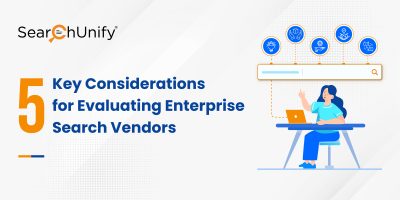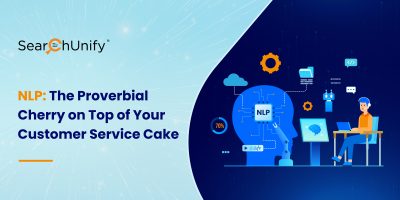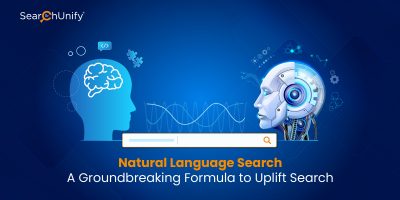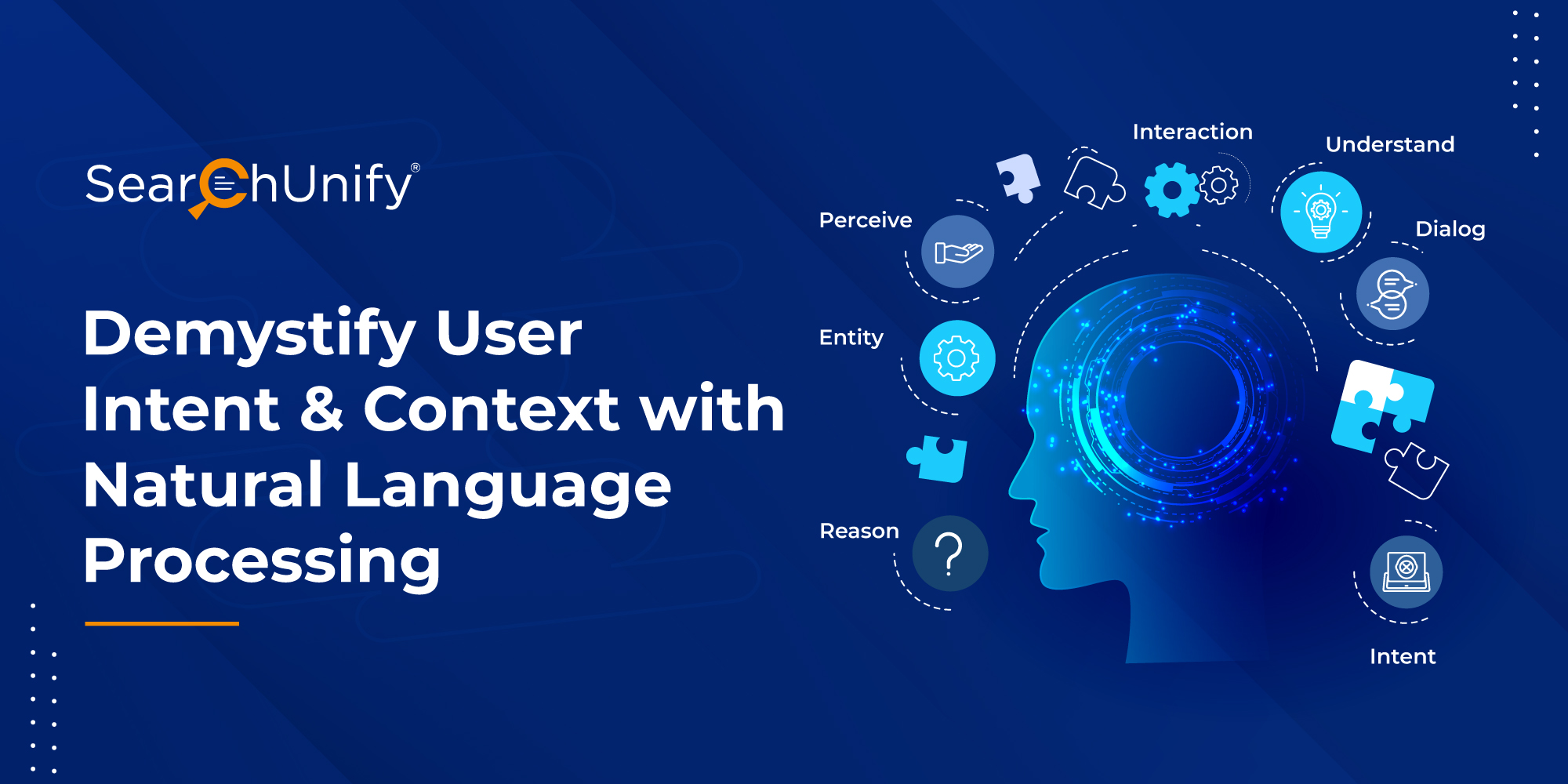
You: ‘Hey! Can you tell me more about this offer?’
Bot: Sure, can I have your email address?
You: I am yet to register.
Bot: I am sorry, this email doesn’t exist.
You: I am not a registered member.
Bot: This email doesn’t match any existing ID.
Yikes! If you’ve interacted with a bot before, chances are you were annoyed, at least once. More often than not, the chatbot interactions are stilted where the cadence is off. Companies looking to provide real value must turn their back to traditional bots and switch to intelligent chatbots. Why? Because these bots leverage technologies like Natural Language Processing (NLP) to ensure the job is done seamlessly. NLP empowers chatbots to mirror human conversations by deciphering context and intent from user queries, thus elevating user interactions and providing first case resolutions.

Source : https://memegenerator.net
This blog post explains how NLP bridges the gap between technology’s understanding of human communication to redefine customer support.
Looking at NLP’s Core Components
Human language is not always precise. So, it’s pretty hard for machines to grasp and comprehend our natural form of communication. What if our ability to understand the context and intent were to be imbibed into a machine? Enter Natural Language Processing.
NLP is what makes a chatbot intelligent. But what exactly is it? It’s a subfield of AI that extracts the meaning out of human language, detects the intent and context, and gives ideal responses based on this analysis. NLP is a multidisciplinary process that combines machine learning and natural language generation (NLG) to make human-to-machine interactions possible. Let’s find out how:
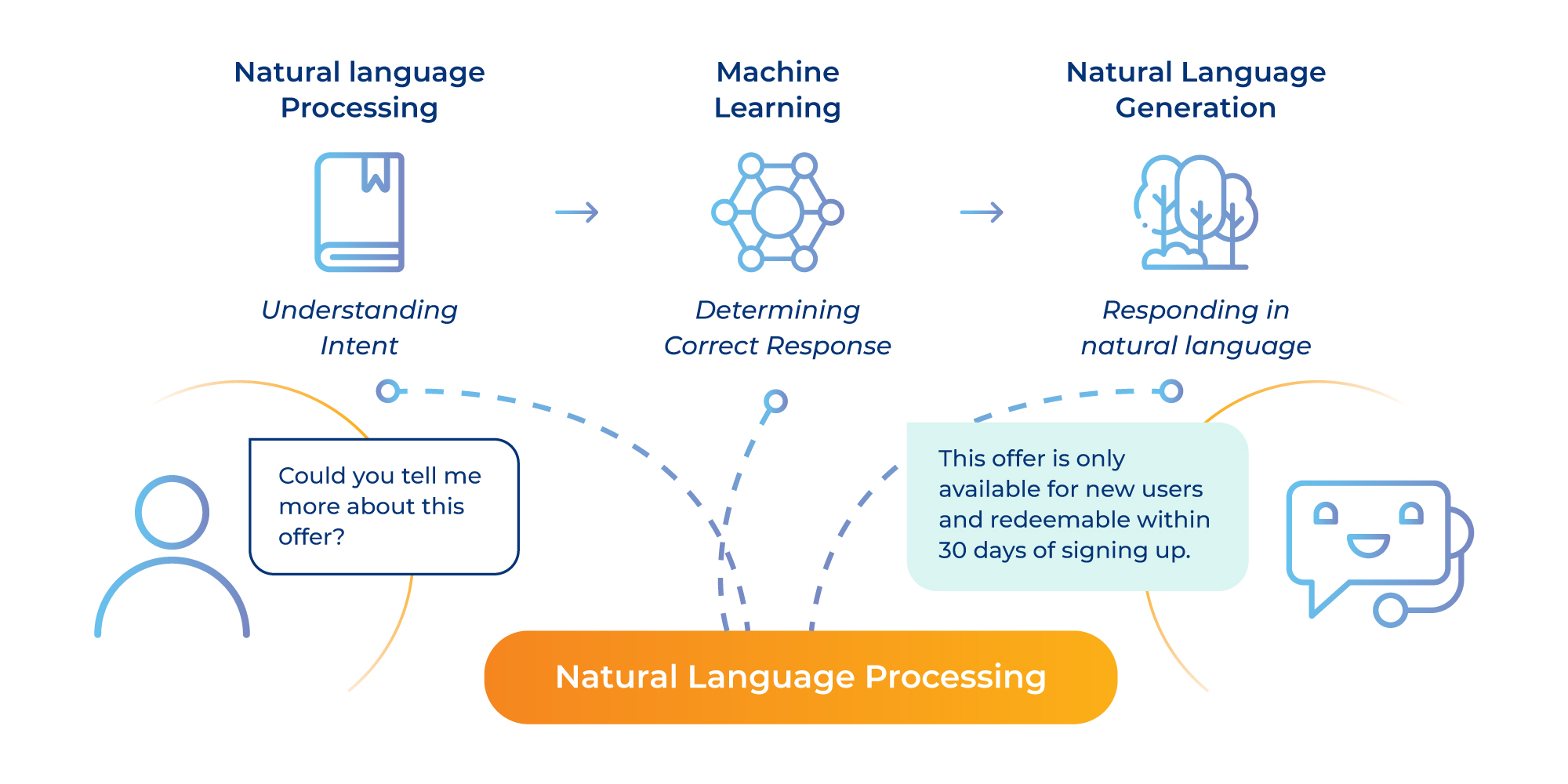
1. NLU To Understand User’s Search Intent
Simply put, search intent means what a user is trying to find by running a search query – it could be to find, learn, or purchase something. Discerning the user intent is Natural Language Understanding’s (NLU) forte. To successfully identify intent, it leverages translation, text summarization, speech recognition, topic segmentation, named entity recognition, semantic analysis, etc.
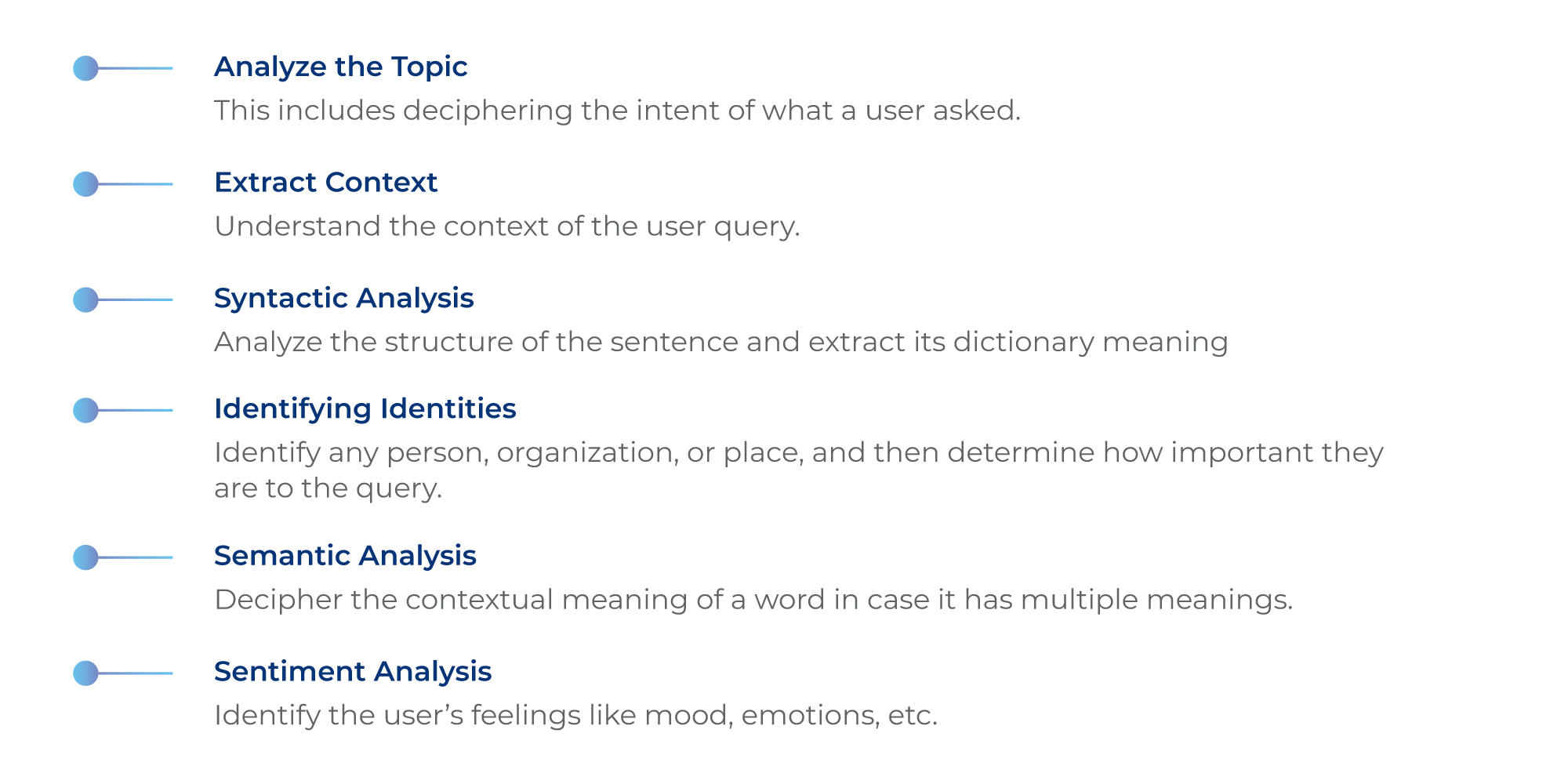
2. ML To Determine The Answer
Machine Learning is another subset of AI that primarily focuses on learning from its own experience and taking smarter decisions over time. It converts complex human text into structured machine data. And when you pair that data with user’s intent, it becomes a lot easier to determine and frame a fitting response.
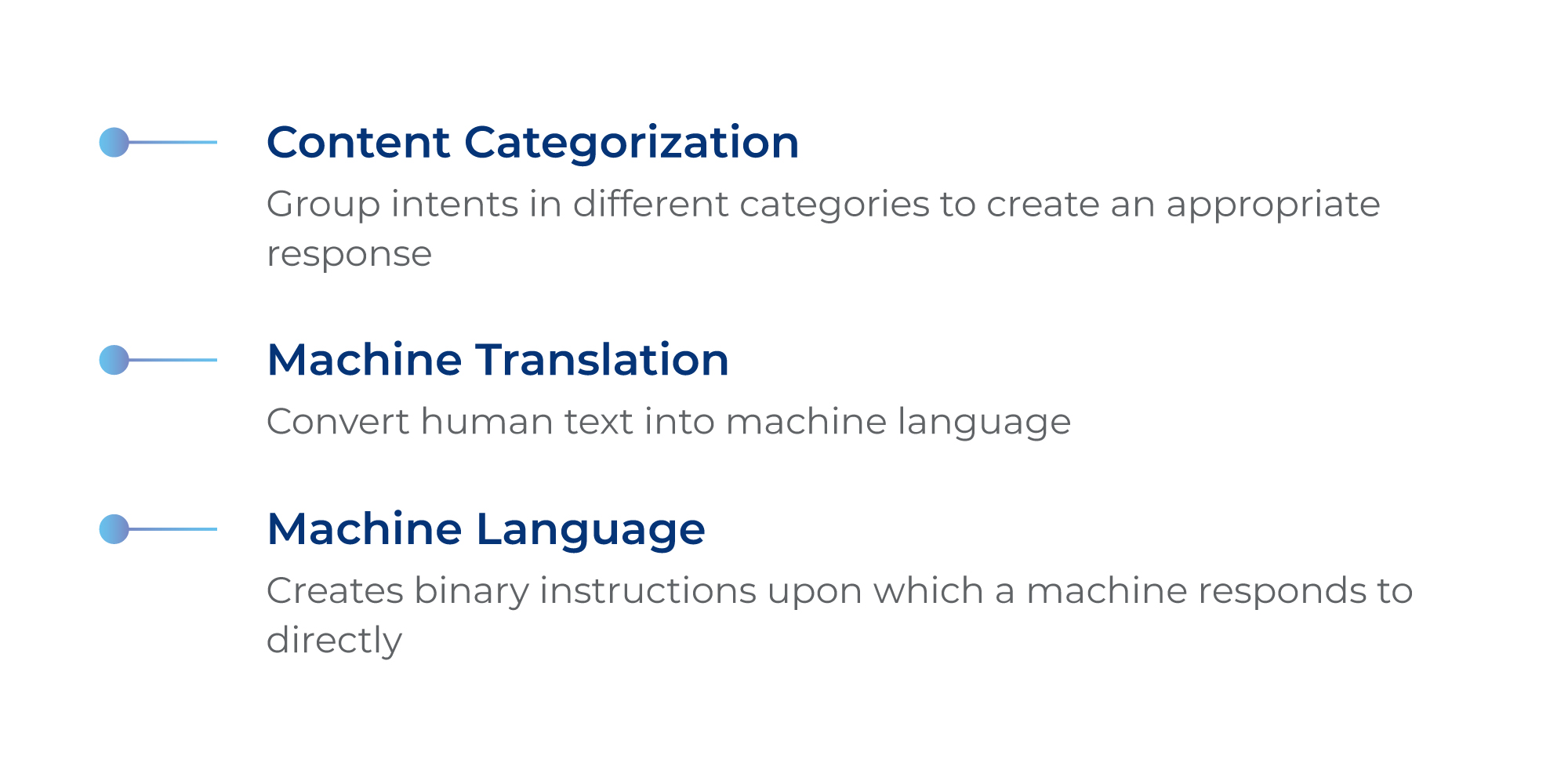
3. Using NLG To Generate The Response
Now is the time to translate machine language back into meaningful words or phrases that the users can understand. The Natural Language Generator (NLG) systems act as a router to mirror human-like conversations and convey our thoughts to the recipients in a consumable language. Thus making the interactions more relevant and natural.
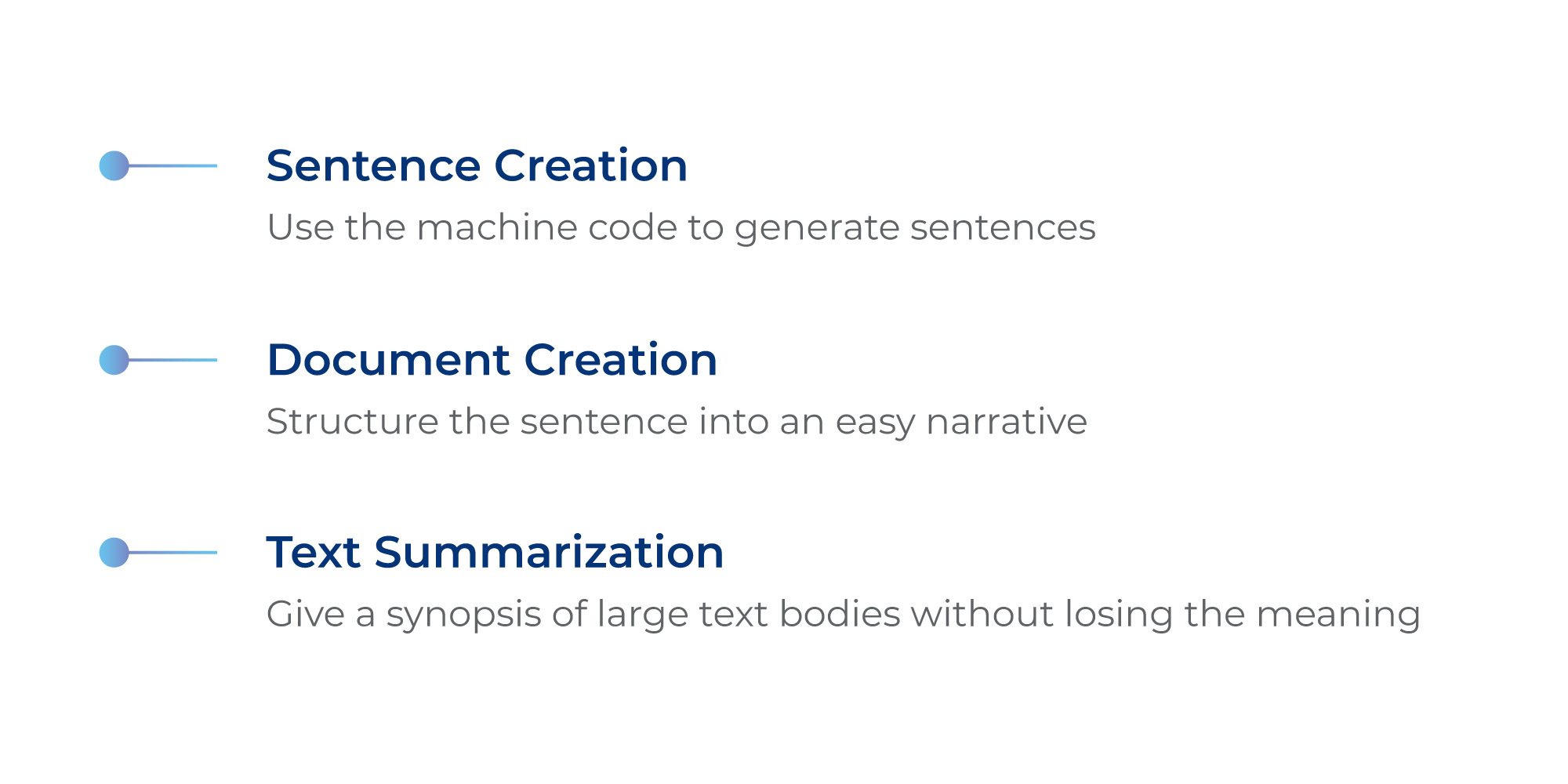
Powering Contextual, Intent-Sensitive Responses with NLP
AI-fueled chatbots leverage Natural Language Processing to detect intent from user utterances. NLP engines parse out user inputs to decipher intent correctly, irrespective of simple or complex language used. This also hints at how intelligent chatbots don’t just rely upon exact keywords. The forthcoming instance will elucidate it further.
An employee wishes to know if the company she’s working for is declaring 2nd April as a holiday. So, she types a search query- ‘Are we getting off on Friday?’ Now, it’s facile for a human to comprehend this question but for a machine, it’s a tedious task. NLP engines have the ability to recognize varying words in addition to distinguishing between syntactic and semantic rules, after which, they return relevant results. Here’s how:
1. Deconstruct the Data
NLP-powered search engines not only extract the intent from the content but also decrypt the syntax and semantics to infer characteristics of the entity. The synthesized data is indexed with semantic tags to ensure better accessibility and searchability. Citing the above example, NLP must first recognize that the ‘we’ here refers to the firm’s employees. Thereafter, it should parse ‘get off’ in its real context; wherein get off means ‘getting a day off from work’ as opposed to ‘getting off the car.’
2. Data Pre-Processing and Tokenization
NLP systems use syntax and semantic analysis to understand how words are contextually related to each other. They also identify the grammatical structure of content with techniques like tokenization that break down the text into smaller semantic units to make it more organized. These smaller units or tokens could be individual words, phrases, or even punctuations.
3. Building NLP Tool to Interpret the Dataset
The dataset is now ready. Next up, it’s time to build an NLP tool algorithm and edify it to interpret natural language. Developers can choose between two main algorithms – Rule-Based Approach and Machine Learning Algorithms. In the former, linguists create ground grammatical rules; while the latter allows NLP systems to learn from their experiences and train to get better at understanding human language.
Takeaway
Language is inherently ambiguous, and in the machine world where the interactions are already limited, it becomes all the more difficult to decipher the intent. This is where NLP comes into play. If you’re looking to leverage NLP for your customer service, then this e-book is for you. Additionally, if you’re interested to dive deep into how NLP fuels an intelligent chatbot, then request a demo and see the SearchUnify Chatbot live in action, today!


